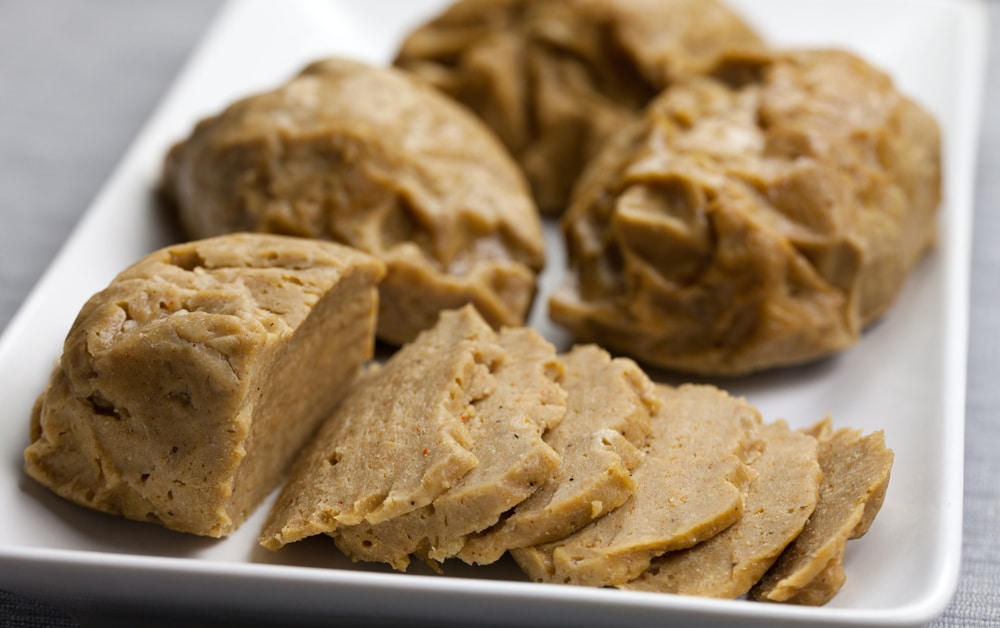Although seitan contains hardly any nutrients per se, it has a very high protein content and can therefore be considered healthy
So healthy is seitan
Seitan is a popular plant-based source of protein that plays a major role in the diet of vegetarians and vegans in particular. It is made from wheat protein and is particularly popular because of its meat-like texture. However, in view of the increasing demand for plant-based protein sources, the question now arises as to how healthy seitan actually is.
- Seitan consists almost exclusively of wheat protein and contains around 25 to 30 grams of protein per 100 grams, making it a very protein-rich plant-based food.
- Compared to other plant-based protein sources, it also contains very few carbohydrates and fats, which makes it particularly attractive for people who want to eat a low-fat or low-carb diet.
- The high protein content also ensures that the feeling of satiety lasts longer and you don’t get hungry again too quickly. This can be particularly helpful when dieting
- However,
- Seitan only contains a small amount of vitamins and minerals.
- For a balanced and healthy diet, you should therefore definitely combine it with more nutritious foods.
Comparison of seitan and tofu: the advantages and disadvantages
Tofu and seitan are both popular alternatives to meat. The foods have different strengths and weaknesses.
- Seitan contains 25 to 30 grams of protein per 100 grams, more than tofu, which on average only contains around 8 to 15 grams per 100 grams.
- Depending on the variety and production method, tofu can be slightly higher in fat than seitan. You should pay particular attention to this if you want to lose weight.
- If you suffer from coeliac disease, seitan is not suitable for you. Tofu is then a better alternative for you, as it is gluten-free.
- Tofu generally has more micronutrients such as calcium, iron and magnesium than seitan.
- Seitan has a more meat-like texture than tofu and can replace meat in many dishes.
- Tofu is more versatile to prepare than seitan because it can have both soft and firm consistencies and can absorb different flavors well.
Tips and alternatives
Finally, here are a few practical tips on using seitan and possible alternatives. You can either integrate seitan optimally into your diet or, if necessary, supplement or replace it with other plant-based protein sources.
- Seitan is ideal for savory dishes such as stews, stir-fries and grilled dishes. You can marinate and season it however you like to achieve different flavors.
- Improve the nutrient density of seitan by combining it with lentils, chickpeas or beans.
- To further maximize your micronutrient intake, you should also supplement seitan with vegetables, wholegrain products and nuts to make your diet as varied and balanced as possible.
- As seitan unfortunately contains very little iron, you can improve your iron intake by eating foods rich in vitamin C such as peppers, citrus fruits or broccoli together with seitan.
- If you cannot tolerate seitan or are looking for an alternative for other reasons, you can try tofu, tempeh or pulses instead. These also offer high amounts of plant-based protein and are usually gluten-free.

